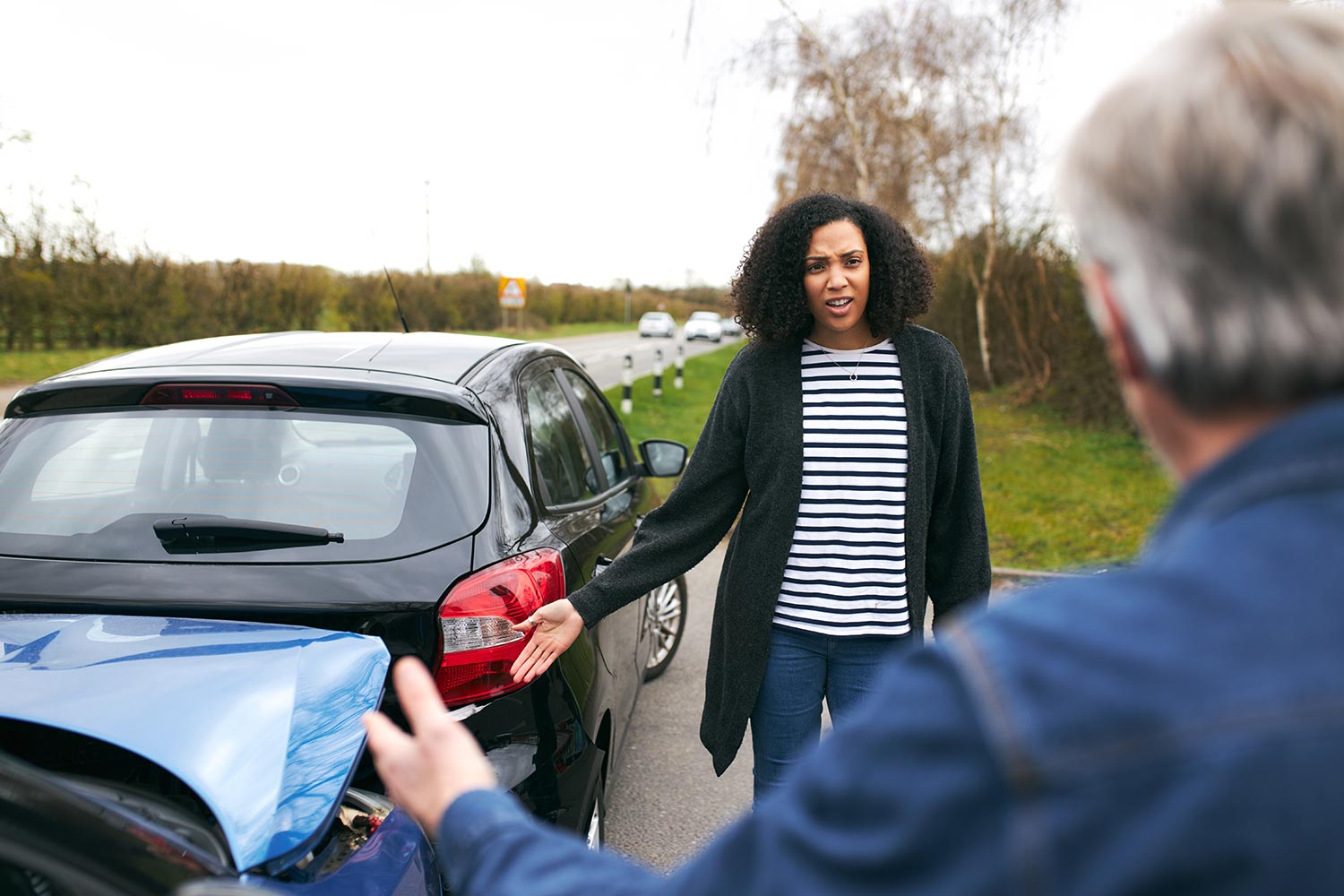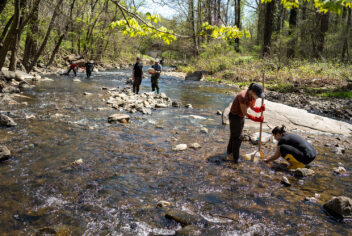All motorists run the risk of causing or sustaining injuries, death, or property damage — but that’s no excuse when your nonprofit’s vehicle is involved in an incident on the road that you could’ve done something to prevent.
When your mission depends on your vehicles, you simply can’t afford crashes caused by irresponsible drivers or faulty equipment — that’s why it’s so important that your drivers are properly screened, trained, and monitored, and that your vehicles are kept in good working order.
If a traffic incident does happen, you want it to be considered an unfortunate fluke — and not the result of lax management on your part.
Let’s visit a scenario involving an incident involving a nonprofit’s vehicles, review the actions that followed, and explore some steps, procedures, and tools that may help your nonprofit avoid a similar situation.
The Nonprofit:
A nonprofit operated a delivery service that collected donated food and supplies and provided seniors and people with disabilities with meals, groceries, and other essential household items.
To fulfill their mission, the nonprofit owned and operated eight cargo vans, which were driven by employees of the organization.
The Incident:
One day, an employee was driving one of the nonprofit’s vans to pick up some donated supplies.
On the way, the driver’s route required a right-hand turn from a stop sign onto a busy street where traffic did not stop. The view of oncoming traffic was partially blocked by overgrown trees and a large recreational vehicle that had been parked right up to the corner of the intersection.
When the driver accelerated and made the turn, the van struck a motorcyclist that had been riding the rightmost lane. The motorcycle crashed and the rider sustained injuries severe enough to warrant an airlift.
The driver immediately called 911, notified the nonprofit’s main office, and remained on the scene until responders arrived. Police administered a sobriety test, which indicated that the driver had not been driving under the influence of drugs or alcohol.
The Legal Action:
The motorcyclist sustained serious injuries in the crash and was considered partially disabled during a long recovery period in which they were unable to work a physically demanding job.
The motorcyclist’s attorney filed a lawsuit against the nonprofit, seeking monetary damages that included medical expenses and loss of income, as well as pain and suffering.
The Coverage:
As soon at the nonprofit was notified about the crash, they alerted their broker, who began the process of making a claim on the nonprofit’s Commercial Auto policy with Nonprofits Insurance Alliance (NIA).
NIA staff reviewed the claim and provided the nonprofit with defense counsel and legal defense costs.
The Result:
The defense team reviewed the incident, the driver’s actions, the conditions surrounding the crash, the driver’s record, and the nonprofit’s training procedures and fleet management practices.
The review determined that, although the driver’s actions had not been negligent or malicious, the motorcyclist did have the right of way, which meant that the nonprofit’s driver would most likely be considered at fault for the crash, should the case go to trial.
The nonprofit’s defense team then worked with the motorcyclist’s legal team and insurance provider in mediation and was able to negotiate an appropriate settlement.
What Did the Nonprofit Do Right?
There really weren’t any winners in this situation: The motorcyclist was badly hurt, the driver had to live with the crash on their conscience (and driving record), the insurer had to pay a settlement, and the nonprofit’s premiums increased.
In scenarios like these, success can often be measured by an organization’s response to a crisis, how well their team is trained, and their ability to prevent a bad situation from getting worse.
In this case, the nonprofit and the driver did several things correctly in the wake of the incident, including:
- The driver remained at the scene, cooperated fully with police, and alerted the nonprofit as soon as it was safe to do so
- The nonprofit activated their pre-established response plan
- The nonprofit was able to produce maintenance records that proved the vehicle was in good working order
- The vehicle’s dashcam footage showed the partially obscured intersection
- The nonprofit notified their broker immediately to begin the claims process
Additionally, the nonprofit helped themselves by establishing safety protocols and procedures in their everyday operations that helped ensure that everyone was properly trained (and suitable) for their roles and knew what was expected of them in a crisis, including:
- Developing and adopting a crisis response plan
- Training team members in the crisis response plan
- Screening all potential drivers
- Conducting background checks
- Requiring driver training (with regular refreshers)
- Keeping detailed records
The nonprofit’s ability to provide documentation that their established fleet safety protocols had been followed enabled the case to be settled quickly, with as little pain as possible for all parties.
How Can Your Nonprofit Protect Itself?
Whether you’re an individual, a business, or a nonprofit, owning and operating a vehicle is always a risk, so you’ve got to make sure that you’re not letting just anyone get behind the wheel for your nonprofit’s mission work.
Other drivers, weather conditions, road hazards — many of the variables that make the roads so risky are outside your ability to control, so protecting your nonprofit’s people and property means managing the risks that you can control.
Screening your drivers, requiring regular training for them, and monitoring their driving habits can help you be sure that your nonprofit’s drivers are the most qualified, the least likely to be involved in a crash, and the best ambassadors for your organization in the community you serve.
Note: If your nonprofit’s drivers are operating their own vehicles and are involved in a traffic incident while on the road on your behalf, be sure to report those to your broker as well — even though the employee’s insurance is primary.
Screen Your Drivers
Lives are precious, vehicles are valuable, and traffic incidents are a problem that no nonprofit needs — so you definitely don’t want someone with a history of reckless/negligent driving, DUIs, or road-rage incidents driving on behalf of your nonprofit.
You especially don’t want to find out about that history after they’ve crashed one of your vehicles — that could be considered negligence on your part.
That’s why it’s important to conduct motor vehicle record checks (MVR) on all potential drivers. This can help your nonprofit preemptively identify high-risk drivers — before they are ever allowed behind the wheel.
NIA Resource: To help you be sure you’ve got the right people in the right positions at your nonprofit, NIA-insured nonprofits get a 40% discount on screening services from IntelliCorp.
Driver Training
When your nonprofit’s vehicles are out on the road, you want to be confident your drivers are trained to operate them safely, defensively, and in a manner that reflects your nonprofit’s values.
That’s why it’s always a smart idea to require driver training and road safety courses — with regular refreshers — for all employees and volunteers who will be operating vehicles on your behalf.
That way, you can make sure that all your drivers are familiar with the vehicle types you operate, that they understand your expectations for safe and appropriate conduct on the road, and that they recognize they are representing you and your mission to the community.
NIA Resource: Eligible nonprofits insured by NIA can get free access to a broad variety of online driver safety courses.
Safe Use Procedures
On the road, there’s no room for error, so every nonprofit needs to set crystal-clear expectations around the day-to-day operation of their vehicles — and make sure everyone understands them.
That’s why it’s critically important that you include “safe use” policies and procedures as part of your overall fleet management, such as:
- Establishing boundaries where vehicles can (and cannot) be operated
- Hours in which vehicles can (and cannot) be operated
- Who is (and is not) permitted to be a passenger
- How many sets of keys each vehicle can have
- Sign-in and sign-out procedures for keys and vehicles
- What is (and is not) considered appropriate use of a vehicle
- Where keys are kept and how they are secured
- The appropriate methods for:
- Loading and unloading passengersSafely anchoring wheelchairsSecuring cargo
- Towing a trailer
- Who to alert in an emergency
- Where each vehicle’s registration information is to be kept
- Fair, equitable, and consistent consequences for when rules are not followed
By establishing safe use rules, you can help your drivers understand what your expectations are when you trust them with your vehicles, how they need to behave on the road, what to do in an emergency, and more.
NIA Resources:
- “Arrive Safe and Sound: Tips to Help Your Nonprofit’s Vehicle Safety Program,” is a free e-book that can help nonprofits set “safe use” policies and procedures for their vehicles.
- Got questions? NIA members can contact NIA’s Risk Management Services team for assistance with your fleet safety protocols.
Proper Maintenance & Upkeep
Road safety requires two basic, essential elements: A safe, defensive driver and a vehicle that is in good working order.
Allowing a vehicle on the road with bald tires, burnt-out lights, a questionable transmission, leaky hoses, faulty brakes, or other issues can lead to an incident just as easily as a reckless driver can.
If an incident happens due to mechanical failure that regular maintenance should have prevented, a jury may consider that to be negligence on your part.
That means you owe it to the people that support your mission — and everyone else on the road — to make sure the vehicles you operate are safe, properly maintained, and regularly serviced.
Vehicle & Driver Monitoring
Put yourself in the shoes of a motorist: You’re cut off by a speeding van that’s weaving recklessly through traffic. On the side of the van is the logo of a nonprofit. Would you feel any inclination to support that nonprofit?
Of course not.
Your vehicles are a visible symbol of your nonprofit to the community you’re trying to serve, so if somebody’s driving them irresponsibly, you need to know about it as soon as possible.
There are many ways of tracking your vehicles and monitoring your drivers’ behavior. These can include measures like GPS devices to track locations and speeds of your vehicles and “how am I driving?” stickers to solicit community feedback about your drivers’ actions.
These can help you be sure that your vehicles are being used appropriately, as well as identify drivers who might be placing your mission at risk — before something bad happens.
NIA Resource:
- Improve driver behavior and promote safety with SafetyFirst vehicle and driver monitoring.
Collision Response Planning
You don’t want to wait until something goes wrong before you think about how you’ll respond to it. That’s how mistakes get made, that’s how a bad situation gets worse, and that’s how nonprofits don’t bounce back when things go wrong.
After a collision, you want to minimize the damage, limit negative publicity, and prevent a lawsuit if you can. That’s why you want to develop clear collision-response procedures and make sure that all drivers understand them.
At a minimum, procedures should be developed to address:
- Safety considerations at the scene
- Complete, accurate, and timely reporting
- Response to inquiries from the media and others
- Careful review of details to determine how future collisions can be avoided
If you haven’t done so already, work with your board, your leadership, your staff, and your legal team and review how your vehicles are used, consider what’s most likely to go wrong, and develop your response plan accordingly.
Make sure everyone knows their role in the plan, review it often, and make updates as needed.
As a claim may be filed for any collision, no matter how light the impact, these are important steps for legal and insurance protection.
Note: Some larger nonprofits may even specifically designate a supervisor to oversee operations related to their drivers and vehicles. When an incident happens, drivers can alert these fleet supervisors (after calling 911) and they can respond to the scene, speak with police on behalf of the organization, and document details.
Documentation & Recordkeeping
It’s relevant for all risks: If someone accuses your nonprofit of any kind of negligence or wrongdoing, you’ll have a much easier time defending yourself and your practices if you’ve got the records to back you up.
That’s why it’s smart to document everything — your processes, your procedures, times, dates, decisions, maintenance/repair/service records, who has keys, vehicle check-ins and check-outs, every incident report, and more.
Consider installing a dashcam in your vehicles and requiring that they be recording whenever the vehicle is in use.
In the event of a crash or collision, details and specifics can be hard to remember — “it all happened so fast” — and the dashcam footage can be used as reliable proof of what actually transpired.
Keeping good records not only helps your team stay more organized, but if your nonprofit ever needs to defend itself in court, your records can serve as proof that:
- You operated responsibly and in good faith
- Your drivers were appropriately screened, trained, and evaluated
- Vehicles were properly maintained and serviced
- Your policies and procedures complied with the law
- Rules, policies, and procedures were consistently and equitably applied
- Everyone understood their responsibilities and duties
- Staff acted and responded appropriately
Strong recordkeeping practices can provide you with evidence to present in court, which can help put you in a much stronger position to defend your mission and your good name.
Conclusion
Unfortunately, traffic incidents can happen to anybody at any time. When they happen, missions can be compromised, budgets take a backseat — you just want everyone involved to be okay.
When an incident happens, you want to feel confident that it didn’t happen because you weren’t careful with choosing your drivers, or that you didn’t maintain your vehicles properly.
Even if the fault is determined to be with your driver, you want to be able to acknowledge it was not the result of negligence.
With proper screening and training for your drivers, regular maintenance and upkeep for your vehicles, and appropriate safety precautions and crisis response plans in place — you give your nonprofit the best chance to prevent a bad situation from getting worse and allow all parties to move forward after a traffic incident as amicably and painlessly as possible.
From the Claims Files stories like the one above are intended to be informational in nature. Coverage will vary depending on language specific to your policy and your specific facts and circumstances.
Please contact your insurance broker and/or agent for your specific coverage implications based on your specific situation and follow any claims reporting procedures from your policy with your broker if there might be a claim.
Nothing in this story should be considered as legal advice or opinion and you should seek independent advice or legal counsel.





